The clothes that pregnant women dress can
directly affect the health of them and fetuses. There’re tips that are
incredibly simple but effective for pregnant women to choose clothes that are not
only safe and economical but also nice and comfortable.
1. Bras
According to statistics, there’re 2 out of
3 pregnant women who don’t wear bras that are suitable to their bodies. This
should be avoided at any level. That’s because in pregnancy, the breast will
get much bigger than usual, increase about 1kg during pregnancy, especially in
the first 3 months. Therefore, if you don’t keep the breast in the right
position, your breast will almost certainly get saggy because breast cells
never come back to normal once it suffers from tensions. For that reason,
pregnant women shouldn’t save money by not buying new bras for pregnancy.
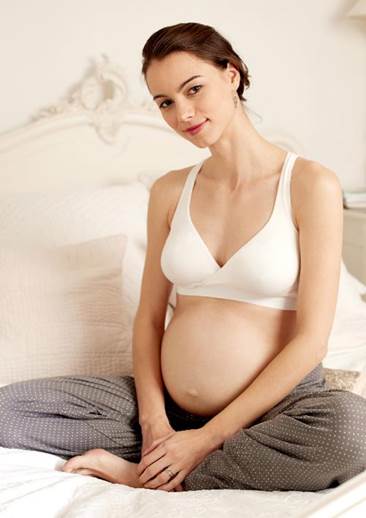
You
shouldn’t be saving when it comes to bras for pregnancy.
A suitable bra is essential to pregnant
women. if the bra is too tight, it’ll prevent blood in breast from
circulating, which affects breast developments, increase milk secretions and
lead to the fact that pregnant women won’t have much of breast milk or in the
worse situation, won’t have enough breast milk for their babies. At the same
time, bras that are too tight can increase the level of rubbing between the
breast and bras, which can lead to a stagnancy of sweat, scratching and breast
infection as the breast is very sensitive in pregnancy. It also puts pressure
on nipples causing effects on fetal circulation and breast engorgement. On the
opposite, if the bras are too loose, or you don’t wear bras, the breast won’t
be kept in the right position. Without the fixation and holding of bras, the
breast will get bigger and saggy: while the upper part of the breast is pulled
down and unable to have good developments, the other part suffers from lots of
pressure, which interfere with circulations of the lymph and vena, causing
breast engorgement.
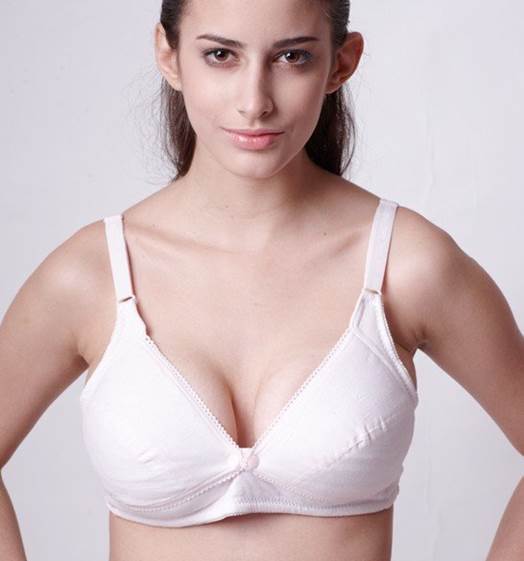
It’d
be better if the bras have soft pads, simple styles and don’t have too much
lace.
Accordingly, you should choose bras that is
fit to you breast index at the moment. According to professional advice, in the
9 months of pregnancy, pregnant women should change bras at 3 times, one in the
third month of pregnancy, one in the fifth and the other one in the eighth.
Each time you buy new bras, buy at least 2 or 3 pieces to be easy in changing
and washing the bras. Before the date, buy other pieces of bras that have
front-locks to be convenient in breastfeeding.
The materials and styles of the bras are
also ones pregnant women should care about. It’d be better if the bras have
soft pads, simple styles and don’t have too much lace. Ones that cover the
whole of the breast are considerable because they decrease strained breast.
Bras that have thick and wide straps will reduce the pressure on the shoulders.
Cotton is considered to be the best material for bras dedicated for pregnant
women because it is ventilating and able to absorb sweat. Otherwise, materials
like plastic, wool and silk… can cause breast engorgement in the future. Bras
that are too finicky and have thick mattresses and hard frames are not
recommended.
2. Underpants
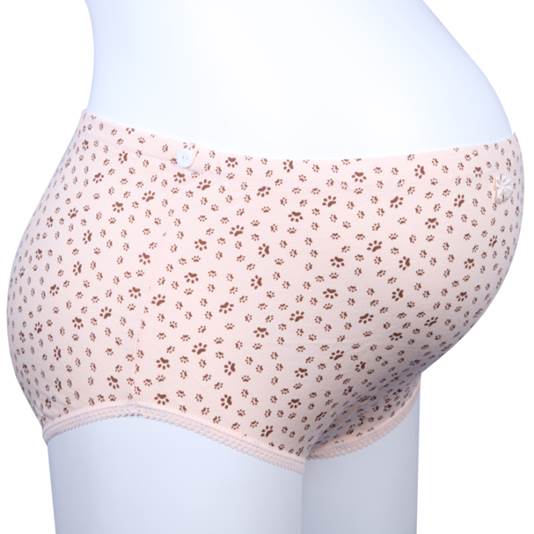
When
pregnant, women should buy high-quality and suitable underpants.
When pregnant, women should buy
high-quality and suitable underpants. That’s because in the first quarter of pregnancy,
the impacts of hormones increase vagina discharge which has tend to cause
genital infections. The size increase of the bump cause itches to pregnant
women. In the last months of pregnancy, the vagina discharge gets more usually
so that underpants that are ventilating and have good absorbency are necessary.
Generally, cotton underpants won’t cause skin allergies, pruritus and rash. They
are ventilating and anti-foul. By the way, pregnant women shouldn’t were tight
underpants because they interfere with the blood circulation and worsen the
swelling on legs. It’d better if you choose underwear that fits with each stage
of pregnancy, has simple and comfortable style; the crotch which is a little
bit loose can help wearers feel comfortable.
3. Do not buy pregnant clothes once
In the first 3 months of pregnancy, as the
body hasn’t have much changes, pregnant women can make the most of casual clothes
that are pretty big. That will help you save quite an account in the period. You
should buy new pregnant clothes when the body has pronounced changes, often in
3rd-4th month and a head. However, you shouldn’t buy all
of the clothes at once believing the concept “the bigger, the better” but
divide it into 2 times: one in the second quarter of pregnancy and the other in
last months of pregnancy in order not to be sloppy and old wearing big-size
clothes or not to waste money on clothes that doesn’t fit you.
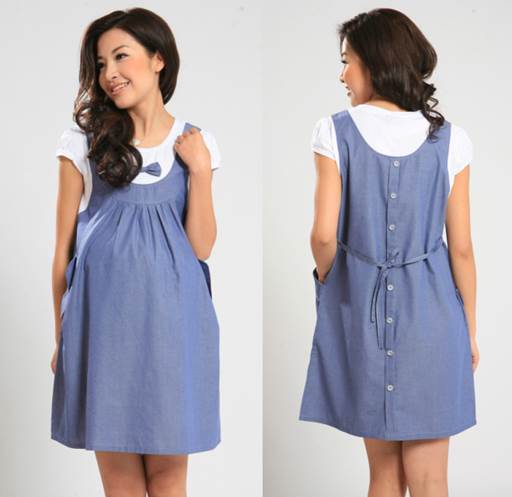
Pregnant
women should buy new clothes when their bodies have pronounced changes, about
the 3rd or 4th months and later.
About the style, to save money and look fashionable,
you should choose clothes that are comfortable, simple and able to use later.
The oversize or free-size dress have loose waist, stretchy cotton maxi dress…
can help you look fashionable and cover the cons remaining after birth. Women
can also make the most of the old clothes of your friends or relatives to save
money.
Using pregnancy belt is also a way to
reduce the expense. Instead of buying jeans just to wear in few months,
pregnant women can buy a pregnancy belt to wear over the jeans to hide it and
keep it not fall off when the jeans is now too tight and you have to free the
button. A apart from fashion elements, pregnancy belt is an invaluable
assistant to pregnant women’s stomach.
4. Choose low substrate and comfortable shoes
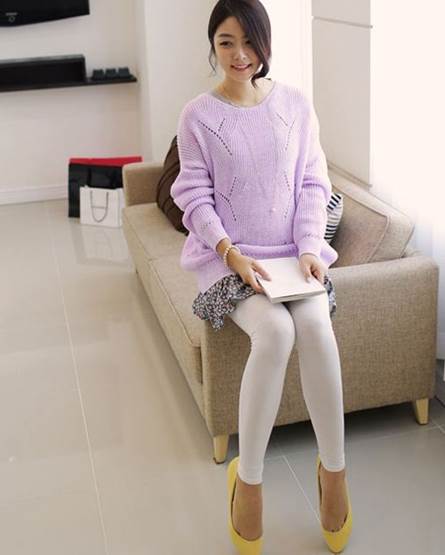
Doll
shoes are flat, comfortable and easy to wear, so it’s safe to pregnant women to
wear them.
When pregnant, your feet tend to get
bigger, which dues to gestational swelling, weight increase and hormone relax in
secretions which loosen feet tendons, muscles and increase the size of the
feet. The closer it comes to the last months of pregnancy, the bigger body gets
and the slipperier it’ll be. Therefore, having shoes that are safe and fit to
your feet is the most important thing to prevent slipperiness and swelling.
To save money, pregnant women should buy
1-2 pairs of shoes that are 10 mm bigger than the size of your feet and buy it
in two times: one in the first 6 months and the other in the last 3 months of
pregnancy. About the style, you should choose shoes that are simple, round at
front, big but fit to the feet and made up of soft materials to make it easier
for the travel. The height of the substrate should be around 15-30 mm so that
pregnant women can wear the shoes easily. The substrate also has to be flat and
have high friction to keep pregnant women and fetuses safe. Especially,
pregnant women shouldn’t wear spearhead shoes or high heels because they can
cause pain to the feet and make the body focus unstable, lead pregnant women to
the risk of trips and falls. By the way, you shouldn’t buy shoes with straps
because when the bump is big, it’s difficult for you to tie shoelaces.